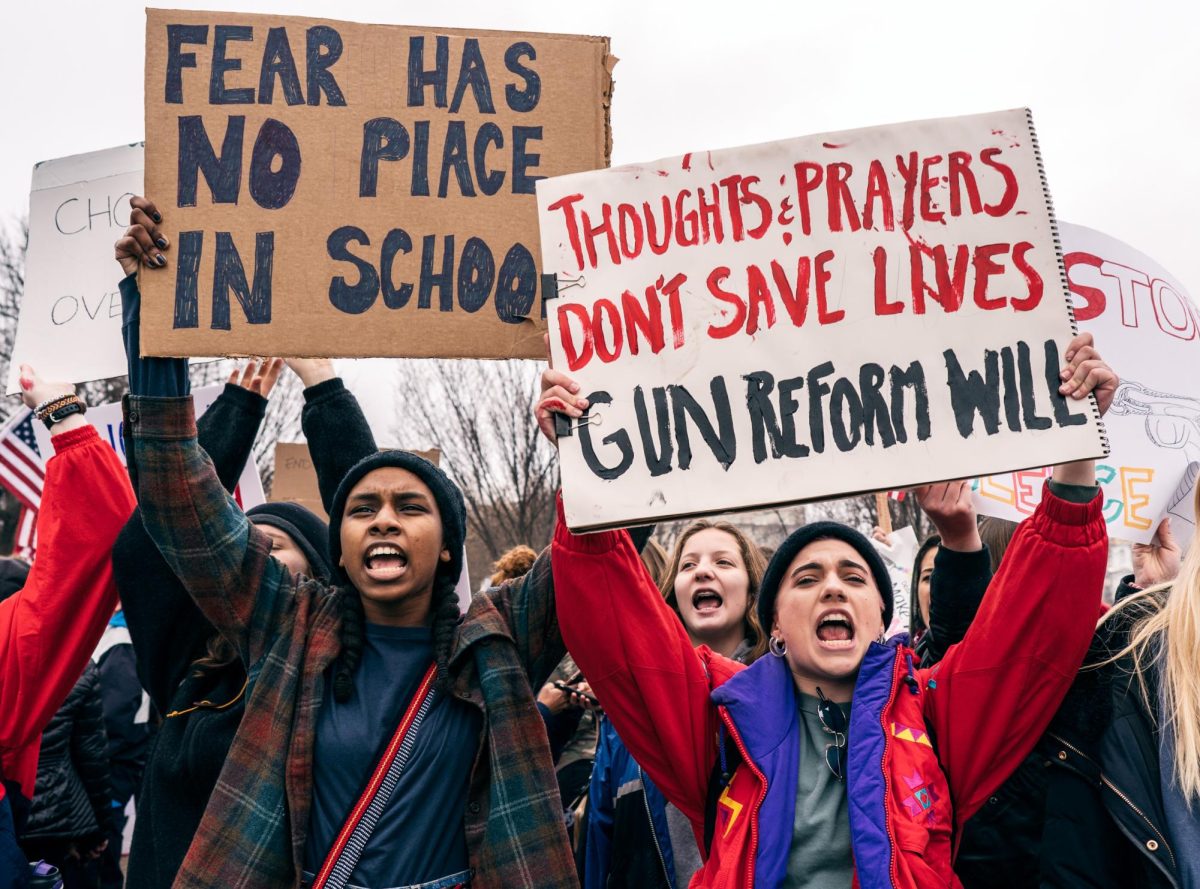In a world where gun deaths among children are rising and more school shootings happen every year, precautions must be put in place. Many schools and districts have taken up active shooter drills that are meant to train teachers and students of what to do in these situations, but is this method effective?
During a drill I have heard many students complain about their legitimacy because in a real situation the “best response would be to escape and run.” This is actually not the case. The National Association of School Psychologists states that “lockdowns can save lives and are considered best practice in crisis response.” Even though a shooter is most likely aware of the drills in place, that does not mean they will be easy to breach. In fact, in most cases, a shooter is not thinking methodically. They will be looking for the easiest target. The extra time taken to determine whether people are in a room and then breaking down the door is not only a deterrent to shooters, but can buy enough time for police to arrive. Most lockdowns are over in less than five minutes, and through repeated training efficiency and confidence is built throughout the school.
Is this confidence always good, though? Some people believe that security and confidence in situations like this cause more harm than good. Teachers should be more prepared in responses other than hiding. More preventative measures like approaching struggling students must be taught to ensure every base is covered. Many studies have also shown that security like video cameras, bulletproof glass, and classrooms that lock from the inside have little evidence of working in a real life scenario. This leads staff and students to rely on a system that may not be able to save their lives, and by providing no other means to protect themselves than the confidence meant to protect them, kills them.
This is not the only issue with lockdown drills. Lasting psychological effects and traumatic stress reactions are also major concerns. Multiple teacher unions have advocated for the removal of these drills due to “concern among parents, students, educators, and medical professionals” about student development. The National Association of School Psychologists say that “depending on circumstances, some lockdowns may produce anxiety, stress, and traumatic symptoms in some students or staff, as well as loss of instructional time.” While loss of teaching time is an easy price to pay in exchange for lives, the uncertainty of the effects of lockdown drills may mean this is a waste of time. The Association also releases best practices for conducting active shooter drills. In their suggestions they put that the school should always announce lockdown drills and communicate whether there is imminent danger. This helps minimize stress in students. Even worse, there is added stress when making fake announcements. Most students know the drill, but this is still a form of deceit that causes undue anxiety. It is also encouraged to send information out to parents explaining the drill and what happens during it. This information may be available on district websites, but a proper email from the school with concise information would ease the hearts of many students and parents. These drills also have the ability to cause a traumatic responses. While a student may seem fine on a normal day, there is no telling what could trigger an anxiety response. This adds another thing that teachers must learn to identify and help. Why force someone through a situation that causes mental harm when a simple rundown could do the trick?
In upstate New York, one study debates the idea that shooter drills cause extra anxiety. In their research they had one group of kids perform a shooter drill while the others did origami. After interviewing them, they found that there was no difference in anxiety or perception of school safety between the groups. Additionally, the group participating in the drill learned the proper steps and could replicate them. More research must be done to confirm this result, but this would mean the majority of concerns surrounding active shooter drills are unfounded.
Even so there are many more factors in place at a school protecting us from threats. Some we cannot see as it would defeat the purpose, as Mr. Perlmutter admitted during one lecture series. Others we can see clear as day. Our School Resource Officer is always patrolling the school, and random weapon searches during our classes decrease the probability of an armed assailant. Fun fact, the outer perimeter of our school is patrolled three times a day. The new weapon detectors, while annoying, add another layer of security as well. If it was up to some teachers they would employ weapon detectors everyday rather than randomly. Unfortunately, our school does not have the staff to spare at the moment to commit to that. Mr. Perlmutter says he is determined to create a “tough outer shell and a soft interior” at our school. While a secure campus is important, a strong and comforting community is just as important. If every teacher and counselor is put on duty patrolling it becomes impossible to find a time to vent to them or form a connection. We also have to work with SOA which makes it harder to coordinate. When they do weapons screening there is only one SOA staff member watching over the cafeteria. But by being able to randomly and successfully complete a day with weapon detectors proves we are able to use them on the fly in case of a real threat. So please keep your mind at ease as Mr. Perlmutter and Academic Magnet staff work tirelessly to ensure we are safe throughout the school day.
References
Asmelash, L. (2020, February 12). Nation’s largest teachers unions call to end active shooter drills over fears they’re traumatizing students. CNN. https://www.cnn.com/2020/02/12/us/active-shooter-drills-teacher-union-trnd/index.html
Bracho-Sanchez, D. E. (2019, April 19). What school threats and lockdowns are doing to a generation of children. CNN. https://www.cnn.com/2019/04/19/health/school-threats-lockdown-effects/index.html
Brunswick, D., Hodge, C., Dawson, M., & Howard, J. (2021, March 10). Locks, lights, out of sight: How lockdown drills affect America’s children. Www.cnn.com. https://www.cnn.com/interactive/2021/03/us/school-shooting-lockdown-drills/
Mitigating Psychological Effects of Lockdowns. (n.d.). National Association of School Psychologists (NASP). https://www.nasponline.org/resources-and-publications/resources-and-podcasts/school-safety-and-crisis/systems-level-prevention/mitigating-psychological-effects-of-lockdowns









